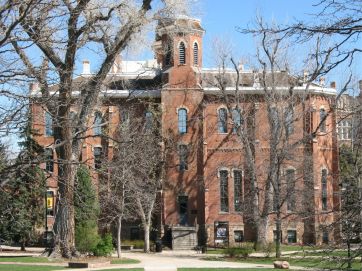Only 27 percent of campus chief financial officers say they have strong confidence in their institutions’ financial viability over the next five years. Only 13 percent have that confidence about the next ten years.
This is according to a recent survey by Inside Higher Ed of 457 college and university CFOs, reported in “CFO Survey Reveals Doubts About Financial Sustainability.” The survey, complete with charts and comparisons with last year’s survey, shows that CFOs are paying more attention to “the market limits on the ability to raise fees,” and that they do not think “reports that significant numbers of colleges face financial crisis are overblown.” College and university CFOs are recognizing a need to rethink their revenue-producing and cost-cutting strategies. They are beginning to prioritize retention of current students over recruiting new students.
Loyola University in New Orleans recently fell short in trying to increase its freshman class size, and it will face significant budget cuts as a result. Loyola’s president, Rev. Kevin Wildes, said, “We’re going to take a hard look at the assumptions we make about the right size of the undergraduate population. For a number of years we always made the assumption of 875 freshmen. I’m wondering whether we can look at it and reshape it another way.” Inside Higher Ed notes, “Students are also shifting their college choices, moving to cheaper options, such as public universities or community colleges.” It reports that Father Wildes wrote to the campus that, “Higher education costs have been in the news, and we compete in a marketplace where price and value are key considerations in students’ enrollment choices. It is not business as usual in higher education.”
No, it is not business as usual. In 2010, NAS president Peter Wood asserted his view that American higher education is facing a financial bubble. Last year University of Tennessee law professor Glenn Reynolds published a booklet The Higher Education Bubble, and he vigilantly updates the evidence on his blog, Instapundit. We at NAS have also tracked signs of a bubble. This time last year, a study called “The Financially Sustainable University” reported that 33 percent of U.S. colleges and universities were on a financially unsustainable path. The report’s authors admonished university leaders to focus on their core purposes, and we observed that mission creep and administrative bloat have real monetary costs.
Peter Wood advised that “diversity” and “sustainability” should be given special scrutiny as ideologies that have distracted from higher education’s mission and caused all kinds of administrative inflation in recent decades. The campus sustainability movement often bills itself as a cost-saving strategy, and its advocates often propose ways to lower energy and water bills. Recently, however, the movement has taken up the cause (led by activist Bill McKibben) of pressuring universities to divest their endowments from fossil fuels. Interestingly, according to Inside Higher Ed’s new survey of college and university CFOs, 75 percent are unwilling to do so:
CFOs show little to no interest in the movement to divest endowments from fossil fuels and other forms of ethically infused investing. A majority of CFOs (56 percent) agreed that colleges should "focus on financial issues (not ethical or political ones) when deciding how to invest endowment funds, with even larger numbers from those at public (64 percent) and private (65 percent) research universities. And an overwhelming majority disagreed (24 percent) or strongly disagreed (51 percent) with the push to divest their endowments from fossil fuel funds.
It looks as though the higher ed bubble and the campus sustainability movement are working against each other. If colleges are going to be financially sustainable, they need all the endowment they can get.
Meanwhile, the University of Wisconsin has announced that it will give academic credit for skills students already know in a program called the "Flexible Option":
The program—one of the first of its kind at a major public university—will offer credit to students who can demonstrate mastery of the skills they acquired through jobs, military service, or prior learning, no matter how much (or how little) time they actually spend in a course. The university's Board of Regents has proposed tuition for the program at $2,250 for three months.
Similar adaptations to higher education’s traditional model may become increasingly attractive to students—and to CFOs—as colleges and universities grapple to find ways to provide value at affordable costs, and thereby stay in business.
All of this is to say that the bubble is not only real but that the collapse has begun. Insiders as well as outsiders are publicly acknowledging the financial problems. A prominent university has failed to meet its enrollment goals and its budget. Students are selecting on the basis of affordability, not prestige. Sacred cows like sustainability are getting skeptical squints from the CFOs. Universities are redefining “academic credit” to be more market friendly. The economics of stringency and survival have at last arrived on the shores of academe.
Image: Flickr













